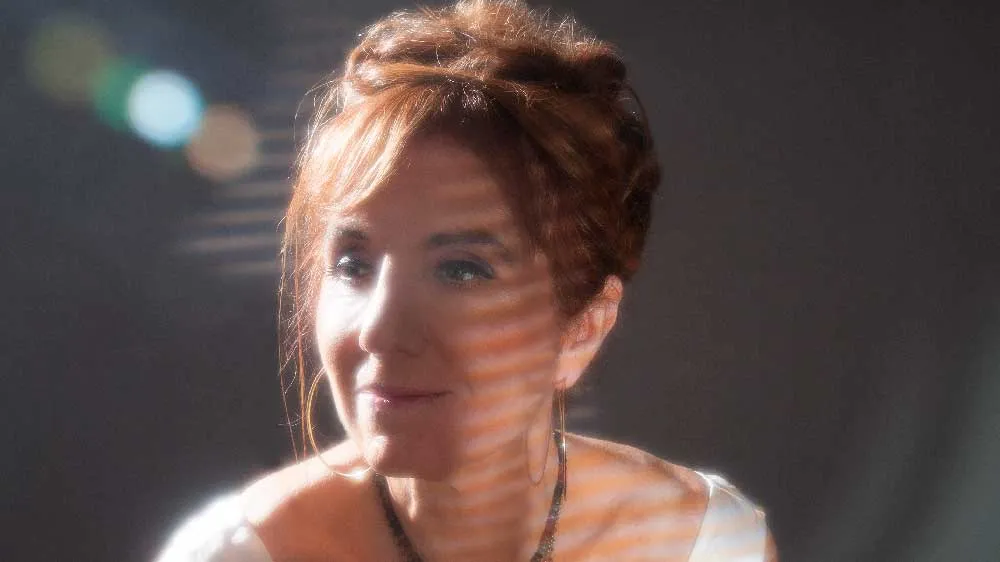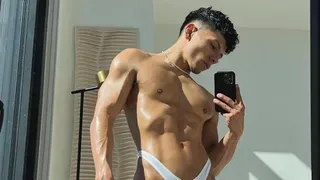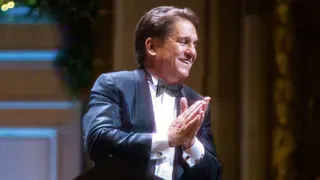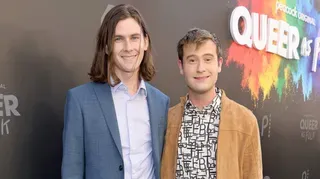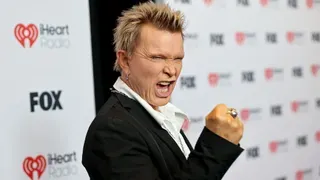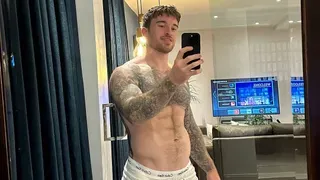November 27, 2023
Rachel Garlin Extends Her Musical Story Telling Skills with Concept Album
Kilian Melloy READ TIME: 8 MIN.
Out singer-songwriter Rachel Garlin's body of work is full of songs that serve as little novellas, from the country-tinged story of a lifelong marriage in "Broke Down House" and the Suzanne Vega/family lore textures of "Wartime Gig" (both from her 2008 album "Bound to be Mountains") to the gay divorcee bounce of "Good Morning" from her 2020 album, "Mondegreens."
Now Garlin has taken her gift for distilling story and character into three-minute gems to a new level with the thirteen tracks on her concept album "The Ballad of Madelyne & Therese." Set in the 1940s, the story relayed by these songs is one of attraction, lust, and love between the two title characters – married women both – with several other perspectives rounding out the narrative. The songs don't force a specific reading; it's up to the listener to listen between the lines and fill in the gaps. Still, Garlin explained to EDGE, she has a complete story worked out with a cast of five major characters. In fact, the songs themselves are only part of the story; Garlin is even now developing a one-woman show that combines narration, additional songs, and these thirteen tracks to tell the whole story.
Not that you can't listen to "The Ballad of Madelyne & Therese" and fully enjoy the album on its own merits. You very much can. But don't be surprised if some day there's a stage play or a movie version.
EDGE: Did you set out to tell a story through a song cycle from the first?
Rachel Garlin: I wrote the songs first [and] the story came second. I had these 13 songs; I knew I was going to record them as an album; and I constructed a story around them. I discovered the story from playing the songs, recording the songs, being in the studio with the songs. At first the story only lasted for the first three songs, because that's as far as I've gotten. Then the story extended to five songs, and six, and eventually all of them. So, it was an interactive, constructivist discovery of a story inside a suite of songs.
EDGE: Were you revising and rewriting the songs as the story was crystallizing?
Rachel Garlin: In some cases, yes. Several of the songs had original lyrics that are nowhere to be found on the album, so they ended up being placeholder lyrics. But, for the most part, the songs remain as written, and, if anything, I made an effort to shape the story around the song. If a song didn't really fit in with the story, I created a new character to sing it.
EDGE: I assumed at first these were real people you were talking about, but it turns out they're fictitious characters. Have you gotten a real sense of who they are?
Rachel Garlin: I have a real sense of the characters, more and more each day. They have full lives, particularly Madelyne and Therese, but also their husbands, Floyd and Severin, and also the cabaret singer, Hazel. So, there are five characters, and I know a lot about them now. They surprise me with new responses to situations that I put them in, and they guide me around the story.
I've performed the narrated concert twice on stage. I plan to apply to workshops and residencies and take the piece into environments where people have a lot more experience in theater than I do.
EDGE: I love the idea that you're turning this into a theatrical work. Will this be a play with music, or is this a concert with some theatrical things happening?
Rachel Garlin: I don't have a concrete answer. I welcome the question because it's what I'm asking, as well. I'd say it's a one-woman show where I play the soundtrack, if you will, of this piece and the band accompanies me, but I give voice to these five characters, with very short scenes, conversation and dialogue, and I'm also the narrator. It's a one-woman show with an ensemble.
EDGE: There are all sorts of musical style influences in the album, but I don't hear a big band influence. Was that something you didn't want to go to despite the '40s setting?
Rachel Garlin: I didn't intentionally not go big band or with a 1940s influence since the songs existed first and we were in the studio way before I had this story. The songs we produced had mostly a contemporary feel. I'm very open to bringing in the sounds and influences of the time period. I'd like to do that. I would want to collaborate deeply on that, since I'm not steeped in that music yet. So yes, I am interested in in weaving that in.
EDGE: The setting of the songs refutes the totally fabricated narrative that being LGBTQ+, and especially trans, is somehow new – like, somehow social media invented us.
Rachel Garlin: Right, that's the thing. There's a character in the play who is a cabaret singer, and she uses costumes and uniforms and her wardrobe to express aspects of her character and her identity. And yes, that was happening on stages; that was also happening for people in real life, but it was very much more hidden. We have no reason to believe that people didn't always dress according to the gender that they knew they were, and yet there was so little visibility that we don't know the full range. Some people were dressing according to the gender that they knew was theirs; they just appeared to be the other gender. Rather than being a woman who dresses in a way that is perceived as male, people were just perceived as a man, like Billy Tipton. [There were] people who just passed. It's always been there, and that's what I'm interested in: The history.
EDGE: Are you looking at the album in its current form as a teaser or a preview where you want to expand on it and bring in additional songs later?
Rachel Garlin: Definitely. I see this as Part One, or like it's a vinyl [record] and it has an A side and a B side. This is the A side, and there's already a B-side, despite my efforts to slow the roll. More songs are coming even as we're releasing this first album, and they're needed in the narrated concerts. I need these songs to give voice to the husbands. I need to paint some pictures of the different settings that they're moving in and out of. Madelyne is a telephone operator and switchboard person, so there's one song that is all the click-clack of the patch in, patch out. There's a lot of interactive moments of her work at the switchboard, trying to figure out how to contact Therese. So, that's one song.
Madelyne and her husband are both gay, so they have a practical marriage. They sleep in the same bed, [but] they generously allow the other to go and socialize with members have their own gender. During the play they slowly come out to each other a little bit more out loud, so there's a song, "I Can't Sleep Straight Through the Night," and that's both of them having insomnia and describing this phenomenon of, like, "I don't know what it is; not the moonlight. It's something that wakes me and shakes me. I can't sleep straight through the night." Those songs are pivotal, and we've started arranging them and recording them for Part Two of "Madelyne & Therese."
EDGE: I'll be looking forward to hearing about the theater version, if not seeing the movie.
[Laughter]
Rachel Garlin: Yeah, well, I'm still developing. I've made a couple of teasers using stock footage. I'm going to prepare a longer piece, probably, then it's more of the songs and additional footage to kind of get people in the spirit of the 1940s.
EDGE: So you're already thinking cinematically.
Rachel Garlin: That was another thing that influenced the story. As I was collecting visuals to go with the album, I found the footage of the telephone switchboard. That's why Madelyne works there, is because of the footage. I found this great video – it's an instruction video [for switchboard operators] of this guy telling the women what to do and how cool the technology is. The switchboard is cutting-edge technology, and people are wishing the telegram could just be all we had – "Why do we have to have this crazy technology that's disembodied?" I was just totally captivated. I was just, like, "Oh, Madelyne has to work at the switchboard," and that influenced the whole story, because that's how she contacts Therese.
You fast forward from that and see we're on a continuum [of progress]. I like to think we're moving forward.
"The Ballad of Madelyne and Therese" is available now on CD and streaming on music platforms.
Kilian Melloy serves as EDGE Media Network's Associate Arts Editor and Staff Contributor. His professional memberships include the National Lesbian & Gay Journalists Association, the Boston Online Film Critics Association, The Gay and Lesbian Entertainment Critics Association, and the Boston Theater Critics Association's Elliot Norton Awards Committee.
